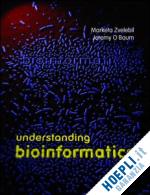The book is divided into seven parts, with thePart 1introducing the basics of nucleic acids, proteins and databases. Subsequentparts are innovatively divided into "Applications" and "Theory" Chapters, allowing readers to focus their attention more effectively. In each part, the Applications Chapter provides a fast and straightforward route to understanding the main concepts and using the applications for analysis. Each of these is then followed by Theory Chapters which give greater detail and present the underlying mathematics. Part1, Background Basics (Ch 1-3) The opening chapters introduce the raw material of bioinformatics: nucleic acid sequences, proteins and databases. Part2, Sequence Alignments (Ch 4-6) The applications chapter shows the reader how to produce and analyse sequence alignments, while the following two theory chapters look more closely at the more advanced techniques and mathematical algorithms involved. Part3, Evolutionary Processes (Ch 7-8) The applications chapter guides the reader through the process of recovering evolutionary history from the DNA data; the theory chapter gives detailed information on how to construct a phylogenetic tree. Part4, Genome Characteristics (Ch 9-10) The basics of gene prediction are covered in the applications chapter, while the theory chapter elaborates on the basic, and the more advanced, techniques. Part5, Secondary Structures (Ch 11-12) The book’s focus turns to structural aspects of macromolecules, with the first chapter giving an overview of web-based techniques for predicting secondary structure and their application while the second chapter covers the algorithms applied in the techniques. Part6, Tertiary Structures (Ch 13-14) This section looks first at modeling protein tertiary structure using homology modelling, threading and ab initio modeling; the following chapter analyses structure-function relationships. Part7, Cells and Organisms (Ch 15-17) In the closing chapters methods for protein and gene expression are analysed, including techniques of statistical analysis and classification, and the emerging field of systems biology is introduced.












